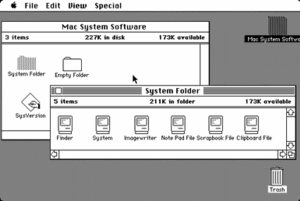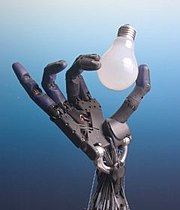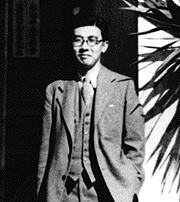Intellectual capital is a term with various definitions in different theories of management and economics. Accordingly its only truly neutral definition is as a debate over economic "intangibles". Ambiguous combinations of human capital, instructional capital and individual capital employed in productive enterprise are usually what is meant by the term, when it is used to actually refer to a capital asset whose yield is intellectual rights.
Such use is rare, however, and the term rarely or never appears in accounting proper - it refers to a debate, and to the assumed capital base that creates intellectual property, rather than an auditable style of capital.
Perhaps due to their industry focus, the term "intellectual capital" is employed mostly by theorists in information technology, innovation research, technology transfer and other fields concerned primarily with technology, standards, and venture capital. It was particularly prevalent in 1995-2000 as theories proliferated to explain the "dotcom boom" and high valuations.
| Contents [hide] - 1 A transitional term
- 2 Individuals versus instructions
- 3 Does "intellect" exclude social capital?
- 4 Interoperability focus
- 5 Meaningless without "social"?
- 6 Subordinates persons and nature?
- 7 Is "intellectual property" valid?
- 8 Brand as more than instructional, individual, and social value
- 9 Brand as tulip; brand as a deadly sin
- 10 Brand, flag, label or fear?
- 11 Brand as asset
- 12 References
- 13 See also
- 14 External links
|
[edit] A transitional term
Because there is little agreement on how the "intellectual" is an asset, it is not clear if the term has a future in the field, or will be subsumed by other ideas, e.g. "brand capital" - social trust that exists only via owned instructions - an intangible.
Formerly of Fortune, and currently the editor of the Harvard Business Review, Thomas Stewart is the journalist of record on Intellectual Capital.[citation needed] He has been following its development since 1991. In his book Intellectual Capital (1997), Stewart introduces IC, offers a taxonomy for organizing it and makes the case for managing it.
Others have followed such line. For example, GartnerGroup in a series of research reports of 2001-2002 (see e.g. 1), and Nick Bontis of McMaster University in several academic papers published in the Journal of Intellectual Capital.2 Both approaches followed more or less Stewart's proposal, although with some variations: intellectual capital includes human capital (the talent base of the employees), "structural capital" (according to Bontis, "the non-human storehouses of information", while Gartner enlarges this to include other organizational knowledge) and "relational capital" (the knowledge embedded in business networks).
Baruch Lev documents "brand" as a new (seventh) form of capital. This seems to violate classical microeconomics basic model of the factors of production - and likely require major rethinking of microeconomics and political economy.
The anti-globalization movement and green economists seem to broadly share a critique of "brand" documented by Naomi Klein in her book "No Logo" - although from an economics viewpoint their proposals for mandatory labelling schemes and a retrenchment of national sovereignty (so called "brand versus flag" or "brand versus label" debates) seem to validate Lev's assumption that brand does in fact add genuine value: a flag, or a brand, or a label, economically, all signify social trust, albeit with different procedures of complaint, recourse, and enforcement.
Brand and intellectual capital debates are generally inseparable from larger debates on role of corporations and governments, and larger debates among anthropologists, primatologists and sociologists on imitation versus creativity in shaping human behavior. This article will avoid the larger political economy questions and deal with these only as required to explain the focus of intellectual capital theory, that being the relative valuation and balanced growth of: Also it can be a measure of how valuable a company's knowledge is.
[edit] Individuals versus instructions
Focusing where the theories agree, there is no clear standard beyond the agreement that individuals and instructions contribute very different value in microeconomics. The question of the contribution of intellectual capital that combines the two in a process is more likely a matter of political economy, and difficult to separate from other issues of relative values of capital across a whole economy or society.
This debate certainly did not begin with Don Sheelan and Naomi Klein - the roots of it can be seen as far back as John Stuart Mill and David Ricardo in the very origins of political economy. In the 20th century, the critiques of Ayn Rand and Richard Stallman are seen by some as representing a spectrum in which all instructional value is derived from individuals, or individuals are seen primarily as valued in terms of the instructional capital which they create - clearly political positions reflecting different attitudes to capitalism, rather than an analysis of how individuals and instructions actually interact. Or, some critics argue, how either affect society or nature.
[edit] Does "intellect" exclude social capital?
The term "intellectual capital" seems almost exclusively used by theorists seeking ways to make systems or groups cooperate without relying on pre-existing social trust - research into measuring reputation, zero knowledge protocols, and authentication very often overlaps with the economic theories involved.
A broader (and far more standard and common) term, "human capital", assumes implicitly that social capital, which is (vaguely) inter-personal or cultural trust, must be involved in all such processes.
[edit] Interoperability focus
Excluding all informal "trust" from human productive activity, presumably, leaves only "intellectual" processes that combine individual creativity and widespread instructional imitation to create value for the enterprise and/or society, e.g. such processes as setting a standard for a programming language - requiring substantial innovation and experiment but ultimately serving no purpose unless the innovation is uniform and widespread enough to enable "interoperability".
The best example may well be the Internet Protocol, or "IP", which was a simple networking protocol originally used to link US defense research sites together. The many individual contributions and extensions were disciplined by a deliberately distrusting process, rather like a court procedure, that included among other things ejecting vendors from commercial trade show space if their equipment failed to interoperate perfectly with that of all others.
Another example is the Bank for International Settlements which seeks to "hardwire the credit culture" of the global central banks to facilitate instant clearing of transactions - by standardizing the trust measures used by banks worldwide.
[edit] Meaningless without "social"?
However, it is hard to imagine how such enterprises could have succeeded without the social capital of the United States government and NATO defense establishment itself[attribution needed] - a common argument among theorists of human capital who hold that it isn't usually sensible to try to separate the role of trust in intellectual work. And who also often oppose the military-industrial complex that they see as funding such work and imposing its values on it.
It is sometimes argued that theorists of intellectual capital, by assuming individual and instructional contributions are inseparable or both equally valuable or not reliant on social trust at all but rather vague "intellect", are deliberately forcing their political economy to conform to ideals of neoclassical economics or even libertarian parties. Denying creative contributions of labor has however been a common theme in economics - treating labor as one of three factors of production was rejected by Marx who reframed them (minus labor) as his "means of production".
[edit] Subordinates persons and nature?
Other objections are heard in the anti-globalization movement which objects to, among other things, global use of patent instruments to "protect" instructional capital at the expense of individual capital (persons) or natural capital (ecologies) - which remain fixed in one nation each. Vandana Shiva's popular account of this process gave rise to the term "biopiracy" to describe corporate patents on plants long used by indigenous peoples prior to colonization. She describes the process of colonial "discovery" as applying to land, to labor, and even to knowledge.
Another critique by meme theorist Liane Gabora argues that creativity is vastly underestimated, and imitation vastly overestimated, in most of our economics. In line with feminist economists like Marilyn Waring, Gabora notes that human mothers are immensely creative in raising children, and human artists often invent new technologies while pursuing no clear goal - but neither activity is measured. While this validates the idea that social trust can be minimal in some such processes, it casts doubt upon the notion that economic activity can ever be understood without a deeper understanding of creativity and how it expresses itself economically as individual capital.
[edit] Is "intellectual property" valid?
Although the theory came long after the instruments, as with all other economics, there are instruments of patent and copyright protection in all countries of the world, and they are increasingly uniform.
There is a substantial literature of intellectual property law and how these protections and instruments further or inhibit productive enterprise.
Controversy seems to surround the question of whether instruments designed primarily to protect rights in individual creativity, e.g. copyright, are appropriate as a means to protect broader shared instructions, e.g. software. Also, whether instruments designed primarily to protect rights in inventions, e.g. patent, can reasonably describe social constructions such as software.
Liberal economists are strong critics of what they call exclusivity rights.
[edit] Brand as more than instructional, individual, and social value
Another debate focuses on the role of trademark and brand name to demark reliable instructions versus membership in a user community - and who and how can someone own the rights to a common phrase or a community's name.
Baruch Lev holds that neither the idea of instructional capital, nor individual capital, nor social capital as understood in sociology sufficiently describes the trust placed by consumers or the standards upheld by the enterprise - that a distinction and separate "brand capital" exists.
Of course, who creates this value, who owns it, and who is liable for harms it does, is the core of the "label versus brand versus flag" policy debate.
[edit] Brand as tulip; brand as a deadly sin
It is quite difficult to separate the analysis from the advocacy on this topic, and from analysis of other topics such as ethical investing or moral purchasing, which inherently assume that certain responsibilities accrue to the consumer, the direct supplier, indirect suppliers, or others involved in the regulatory, inspection, enforcement and protection process.
Many critics of pro-"brand" views hold that "brand" is merely an aspect of firm-specific human capital, specifically, firm-specific social capital, and that it cannot be a means of production nor an effective means of protection since it often disappears very quickly. They point to such cases of sudden brand name devaluation, e.g. the "dotcom boom", Enron and Arthur Andersen in late 2001 and early 2002, and far earlier phenomena such as the Dutch Tulip Boom, as evidence that enterprises whose financial market valuations exceed the actual instructional reliability, individual creativity, and social trust combinations vested in the firm itself, are quickly dragged back down to reasonable valuations based on more traditional criteria associated with financial and infrastructural holdings.
If this view is correct, it has major implications - brand becomes, as Naomi Klein claims, "No Logo", but simply a trigger for "fear" or "lust" or "greed" or other sins, with no lasting persistent value. Brand may not even validate that it represents responsible individuals, reliable instructions, and trust in a social structure in which they all cooperate. In effect, mandatory labeling could do everything that a brand could do, and corporations may be, as David Korten claims, mere "responsibility evasion mechanisms".
[edit] Brand, flag, label or fear?
All of these positions seem to validate the basic analysis that some kind of intellectual value (beyond the emotional assurances described in social capital theory) accrues to some tag, be it a brand, a flag, or a label. Indeed there is evidence that the three may be interchangeable economically, and merely provide a more specific or tangible assurance to the purchaser:
Proponents of anti-"brand" views often see mandatory labeling backed by national sovereignty (label and flag, with "no logo") as a way to replace or drastically reduce the trust placed in corporate brand names. Most of the strongest opponents of corporate identity are also proponents of such mandatory labeling schemes, e.g. in textiles, and on organic foods. They have had substantial success labeling genetic modification, especially in the EU, and spawned the fields of biosafety and (along with more focused nonproliferation and biological warfare concerns) the newer field of biosecurity.
The nonproliferation debate arises between promoting and inhibiting certain types of trade in intellect - most notably those "dual-use technologies" that can both add and seriously subtract economic value, when expressed in tools or as weapons. These concerns were highlighted when US President George W. Bush in 2001 rejected the Biological Weapons Convention - in part to satisfy biotechnology corporations who feared that arms control inspectors would potentially steal "intellectual property".
The brand, flag, label debate may need to be reframed in terms of simple fear: where did it come from? Will it work? Who's got another one?
[edit] Brand as asset
Whether flags, brands, labels or simple fear dominate economic decisions, it seems that the underlying theories of intellectual capital and of human capital don't explain them. When attached to "capital" as prefixes, the terms "intellectual", "knowledge" and "human" often conceal more than their use can reveal. Thus the terms "intellectual capital", "knowledge capital" and "human capital" more properly describe debates, not assets, as internally generated assets do not appear on a balance sheet, however International Financial Reporting Standard 3 on Business Combinations requires acquired intangible assets to be accounted for during the purchase price allocation exercise. They produce neat abstractions but so far poorly explain what actually occurs in the biologically real world: individuals buying in a social setting based on instructions.
So far, the more specific terms "individual", "instructional" and "social" from human development theory, have been preferred in Wikipedia as adjectives describing classes of capital. In part this is because these terms have definitions that arise from academic categories and practices rather than faddish marketing or management theories. There are standards for assigning value to these, e.g. the UN Human Development Index which literally ranks flags (of countries) for quality of life.
Extending such standards to labels (via mandatory labelling) and applying them positively in brand management, e.g. positioning a brand for appeal to an ethical minority, is increasingly common. Projects by Consumerium and AdBusters seek to make comprehensive outcomes more important in buying decisions. This in turn is part of a trend towards more moral purchasing.
When viewed as an asset, then, a brand is simple social capital that may have an increasing amount of instructional capital attached to satisfy an ever-rising demand for more information about product origin, production and distribution.
 It's an acrylic table that's 22 inches high, with a 30-inch horizontal display. Remember those tabletop arcade games in bars in the 80s? It looks something like that. Inside, there's a PC running Vista, a projector, and an array of cameras that track objects and touch on the surface of the screen. With a little special programming sauce, it all comes together in a very slick experience.
It's an acrylic table that's 22 inches high, with a 30-inch horizontal display. Remember those tabletop arcade games in bars in the 80s? It looks something like that. Inside, there's a PC running Vista, a projector, and an array of cameras that track objects and touch on the surface of the screen. With a little special programming sauce, it all comes together in a very slick experience.


 The T-Mobile demo was interesting. They'll be installing the machines in T-Mobile stores, and the idea is that it's something between a traditional retail experience and a website. You'll place a phone on the unit, and it will pop up not only the price, but information about the phone. You'll be able to flip through service plans and options, and when you find what you're looking for, you'll drag it onto the phone, and it will be added. At the end, you hit check out, and the phone is provisioned, and delivered to your house. It's slick.
The T-Mobile demo was interesting. They'll be installing the machines in T-Mobile stores, and the idea is that it's something between a traditional retail experience and a website. You'll place a phone on the unit, and it will pop up not only the price, but information about the phone. You'll be able to flip through service plans and options, and when you find what you're looking for, you'll drag it onto the phone, and it will be added. At the end, you hit check out, and the phone is provisioned, and delivered to your house. It's slick.  And Microsoft is launching the platform in a very constrained way. Right now, as I've said, it's just for big retail clients, which means that you won't have a Milan coffee table any time soon, although that might be the real killer app here. Imagine controlling a Media Center PC like this, or doing interactive slideshows at your house.
And Microsoft is launching the platform in a very constrained way. Right now, as I've said, it's just for big retail clients, which means that you won't have a Milan coffee table any time soon, although that might be the real killer app here. Imagine controlling a Media Center PC like this, or doing interactive slideshows at your house. 











